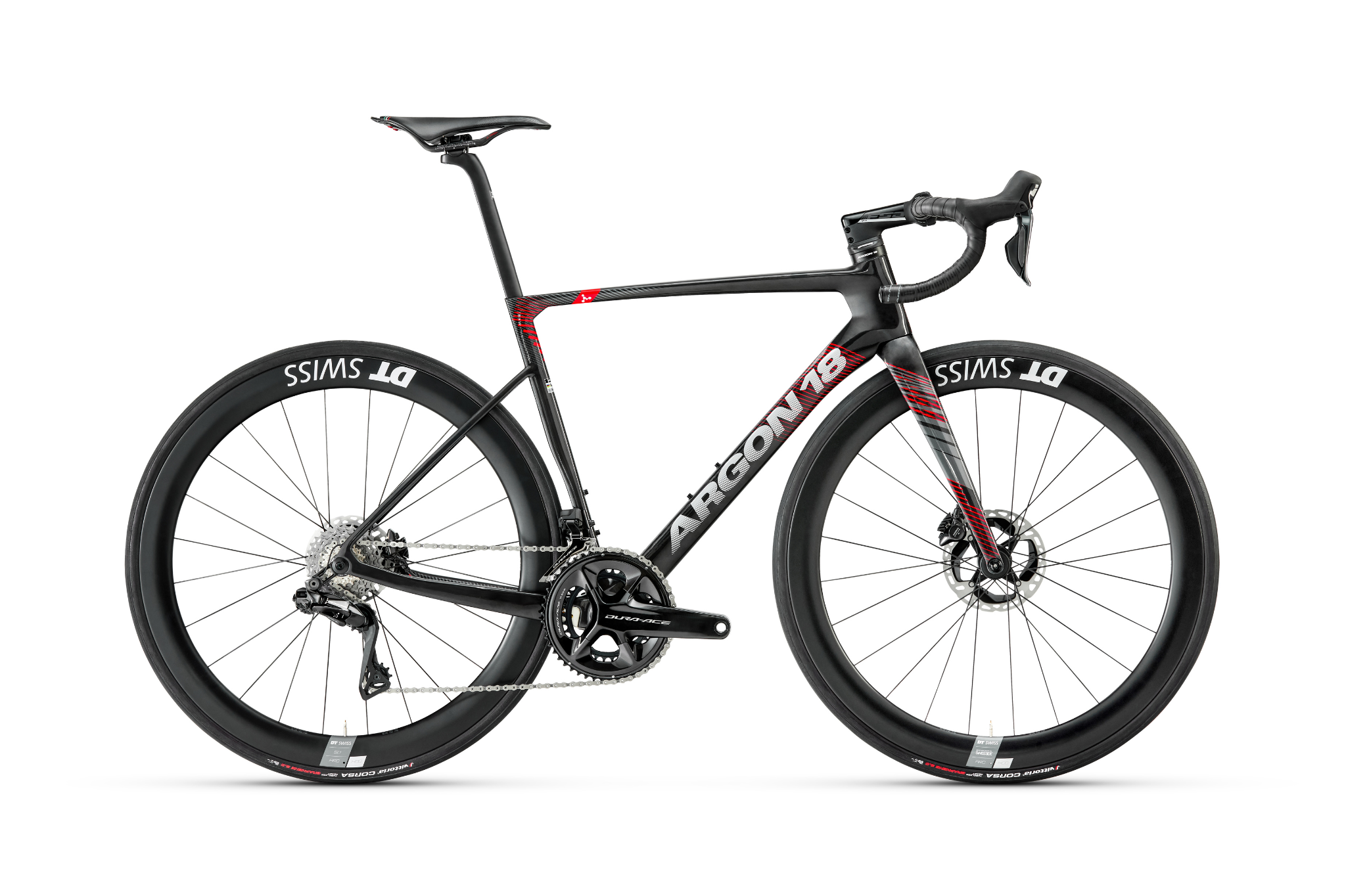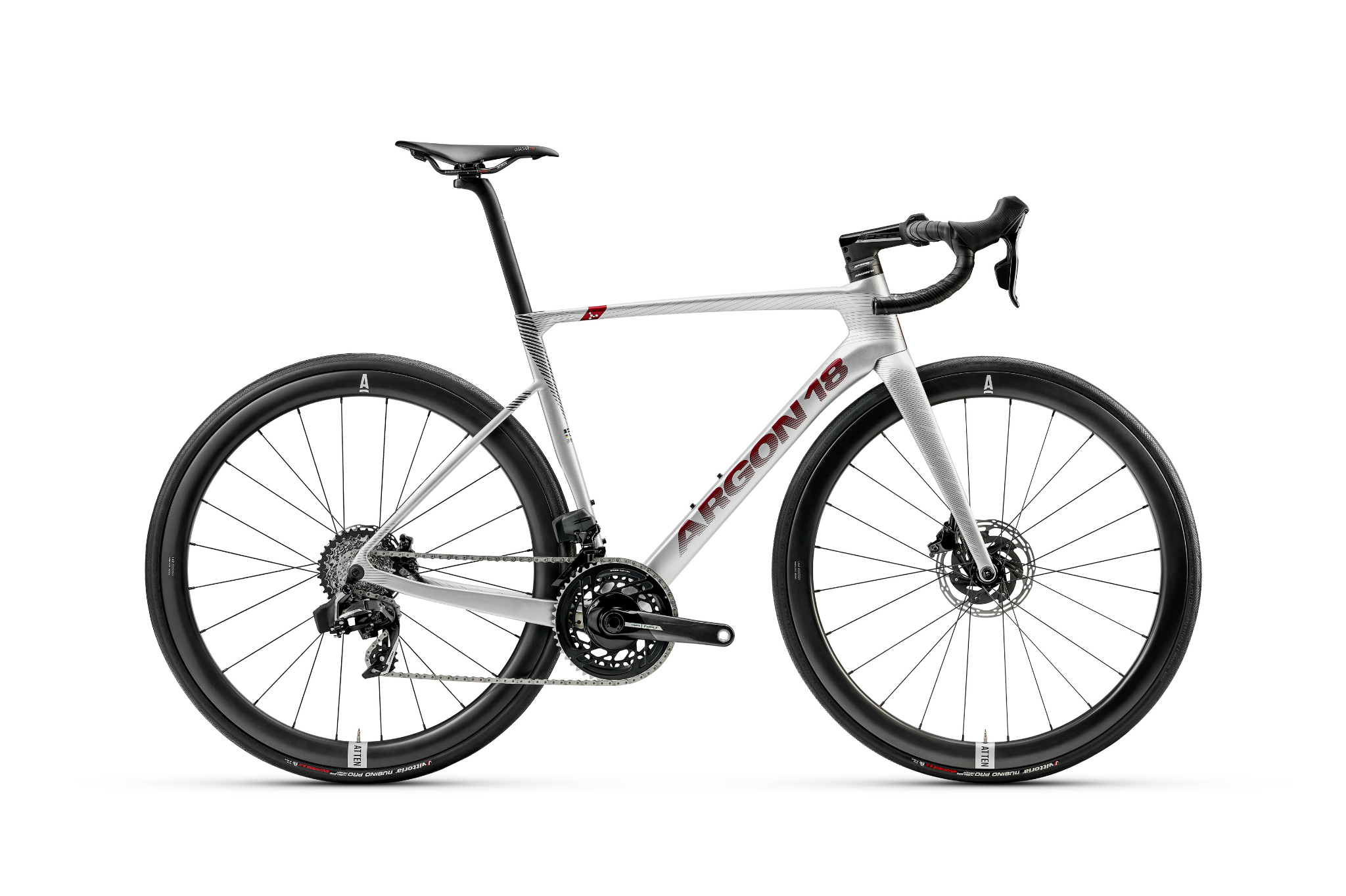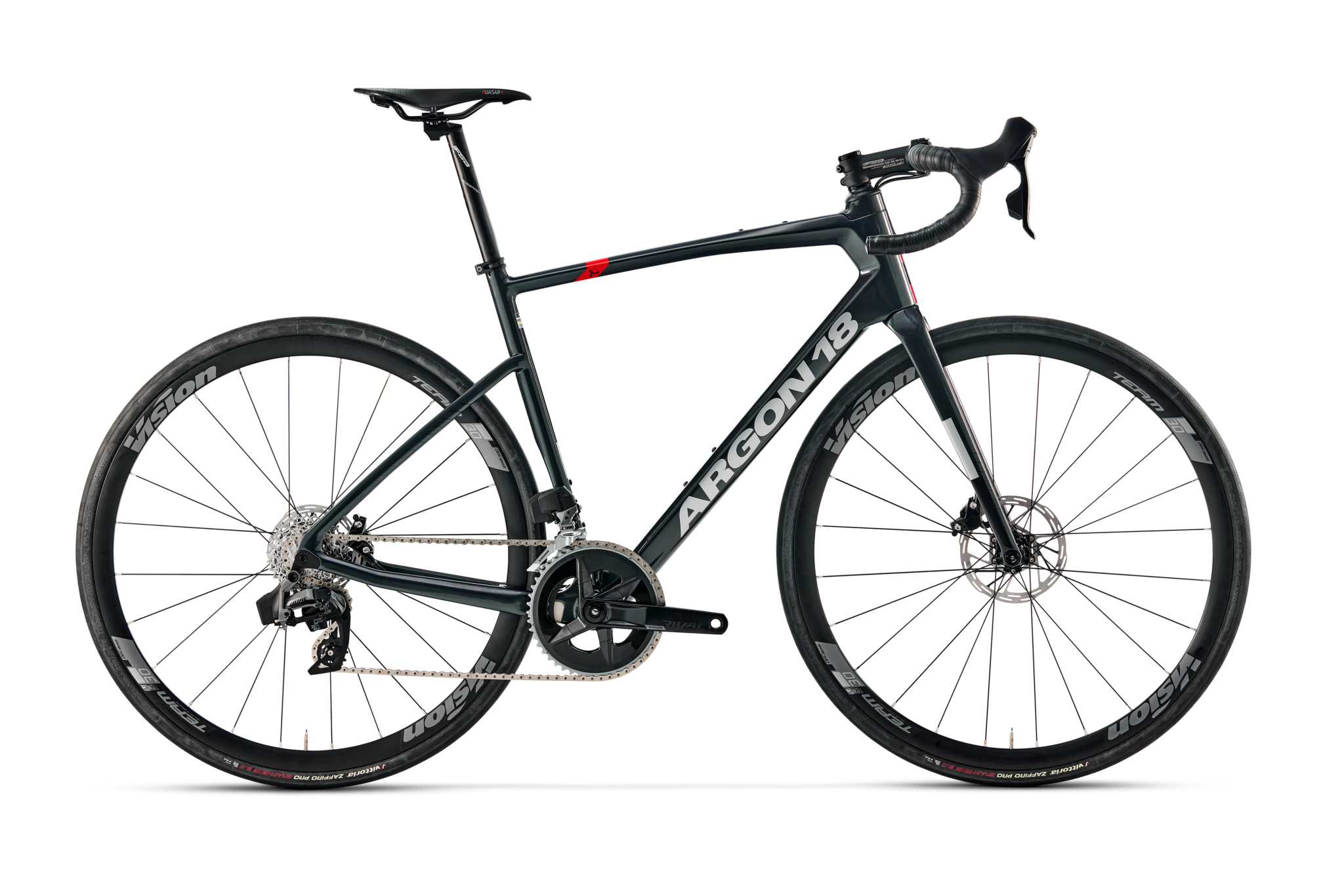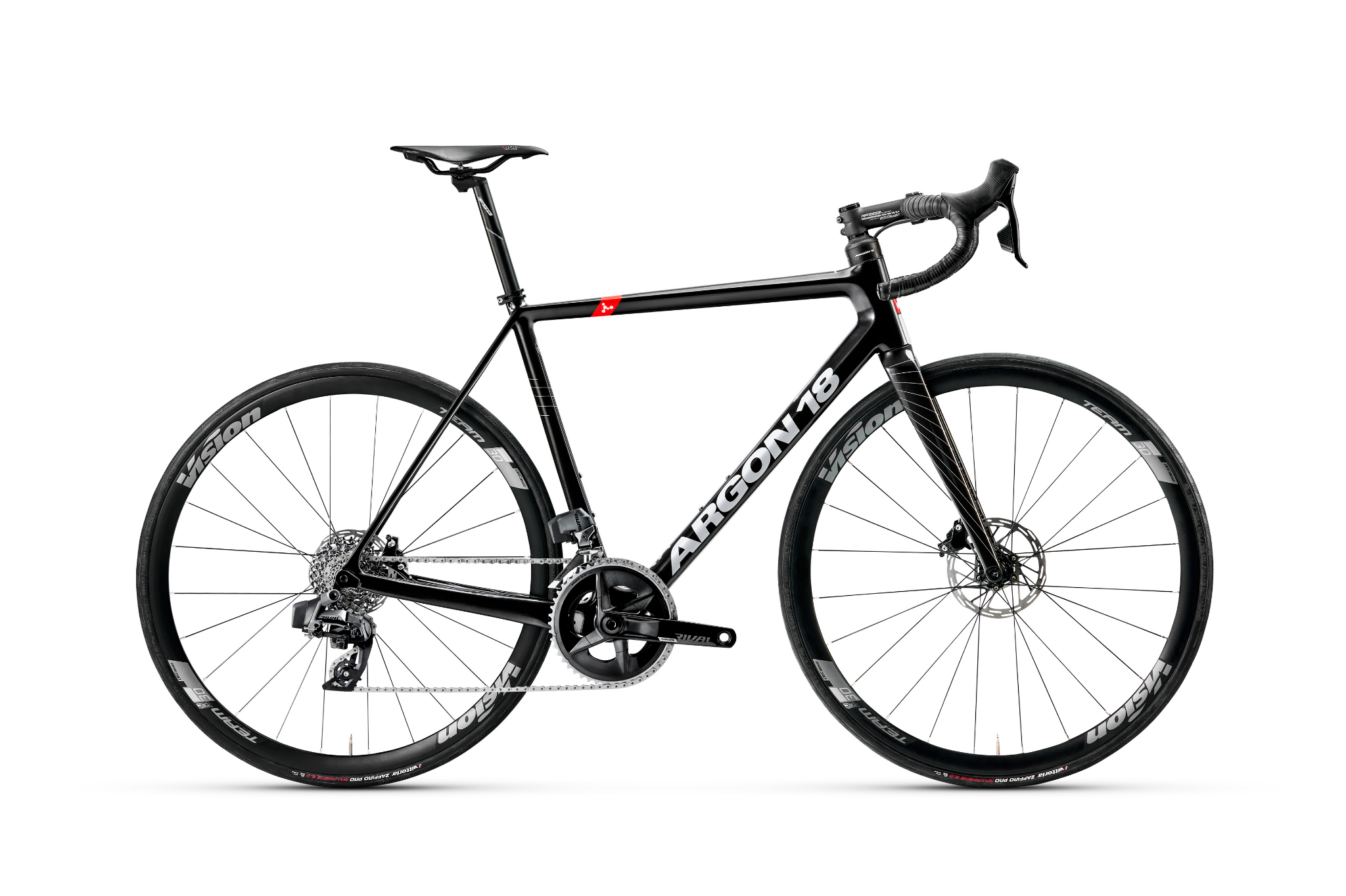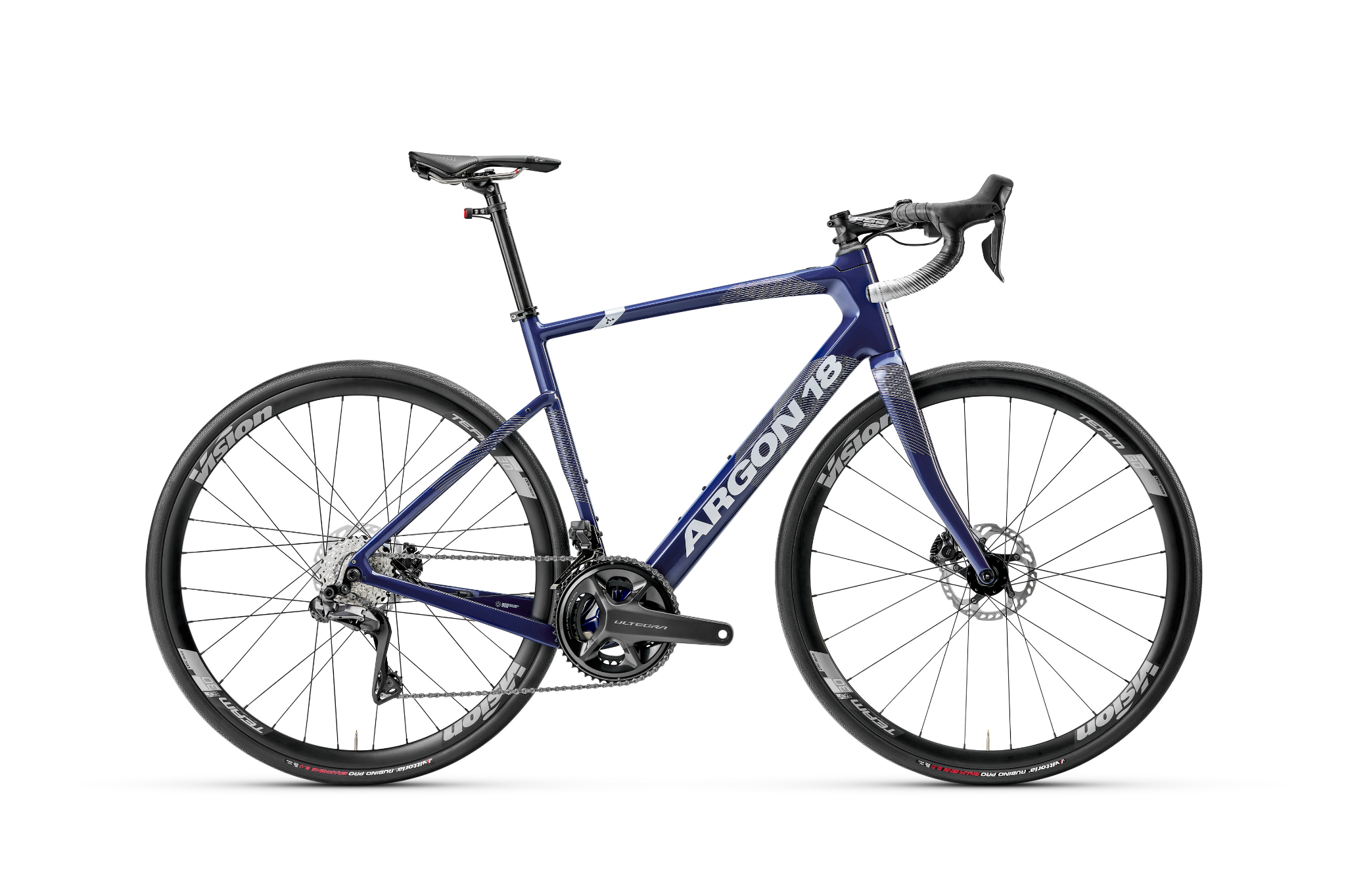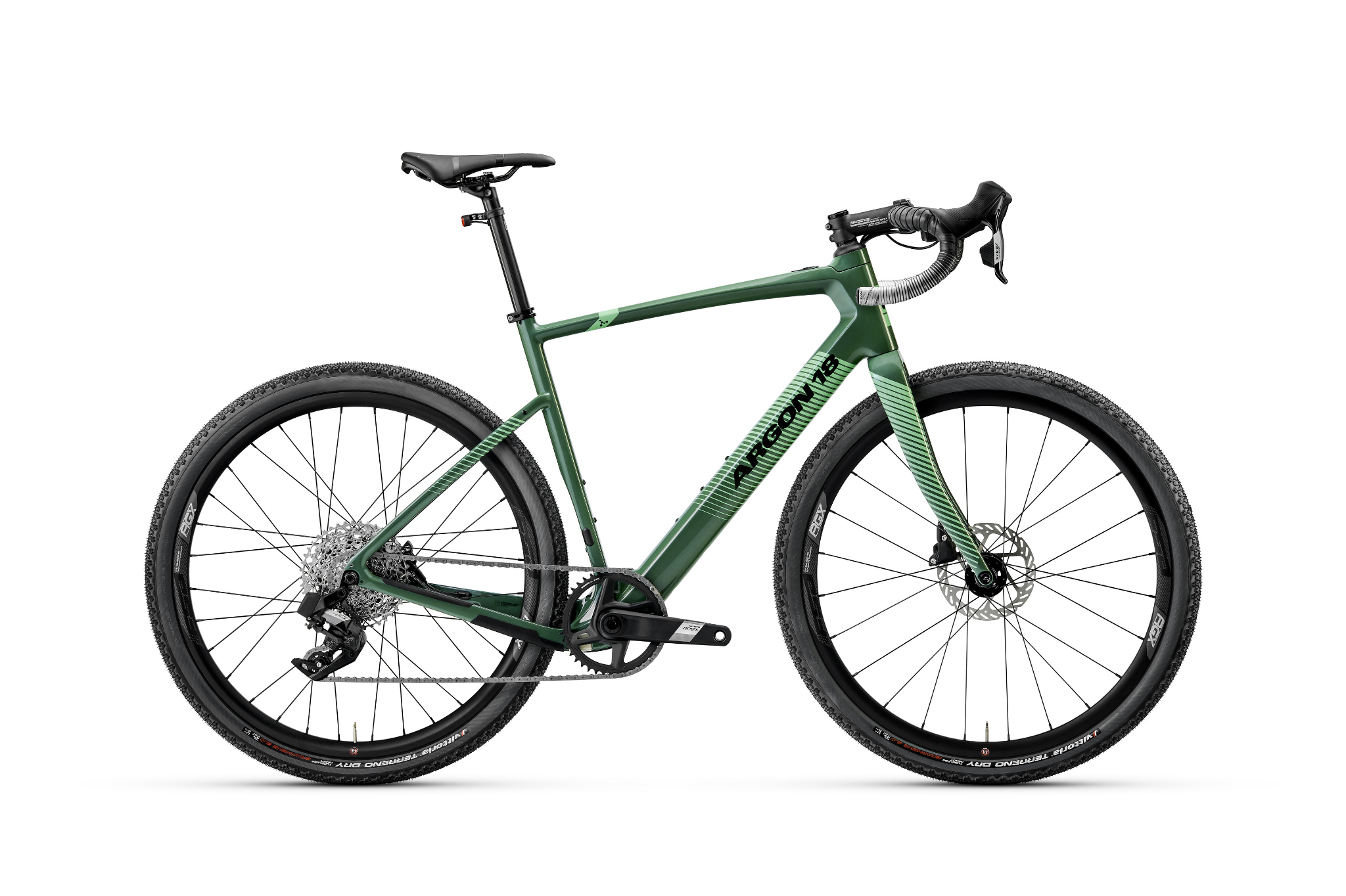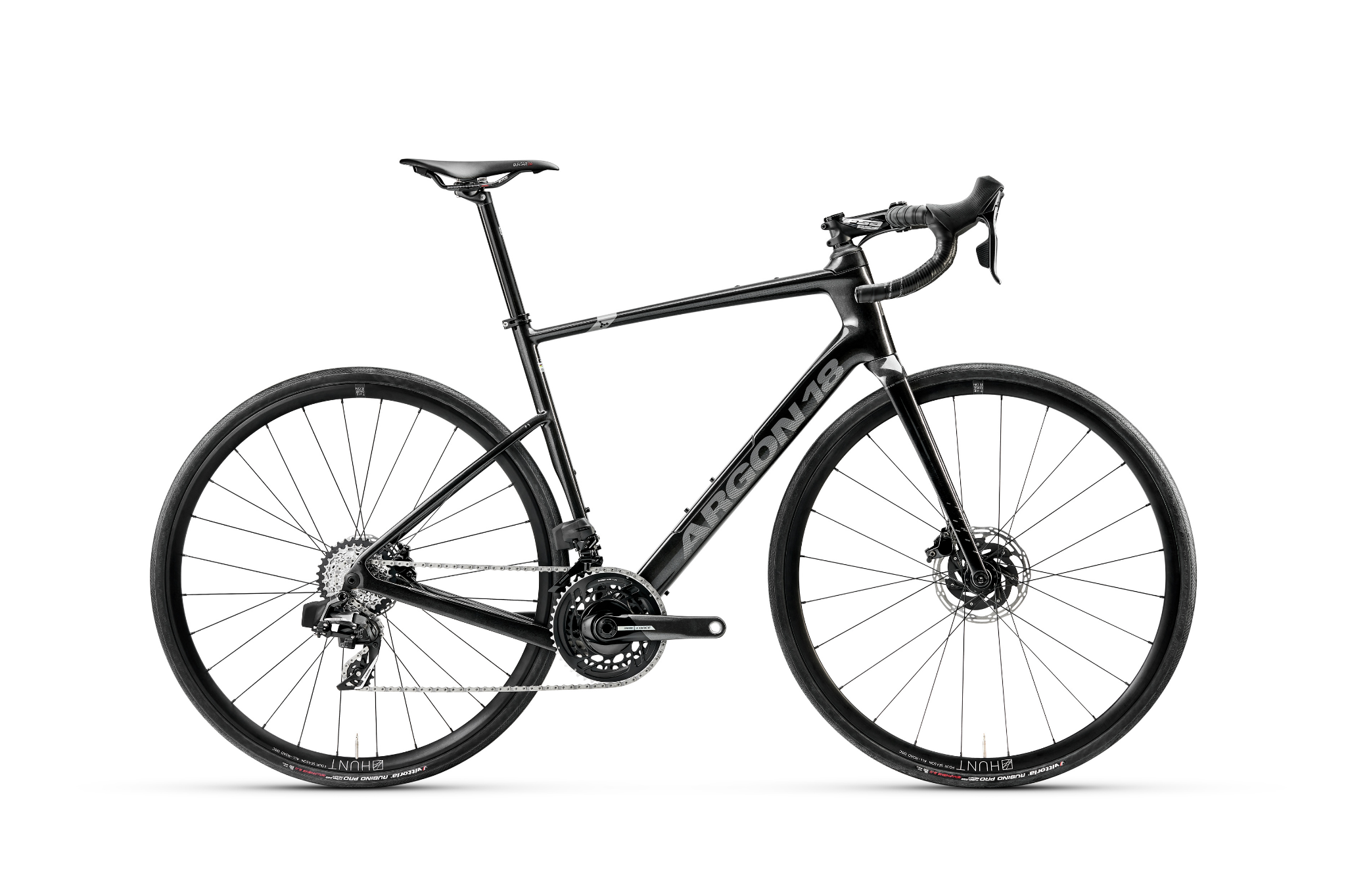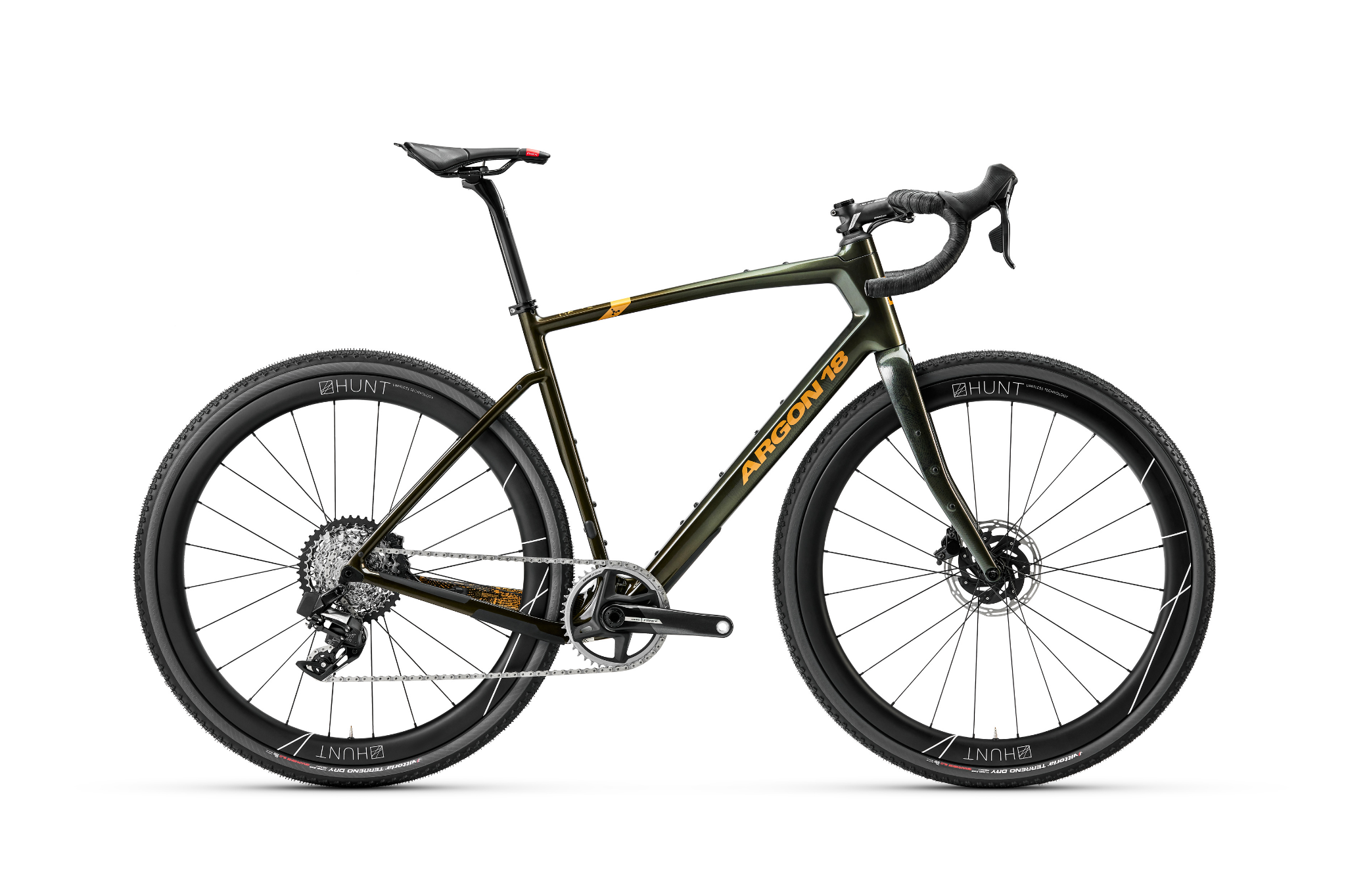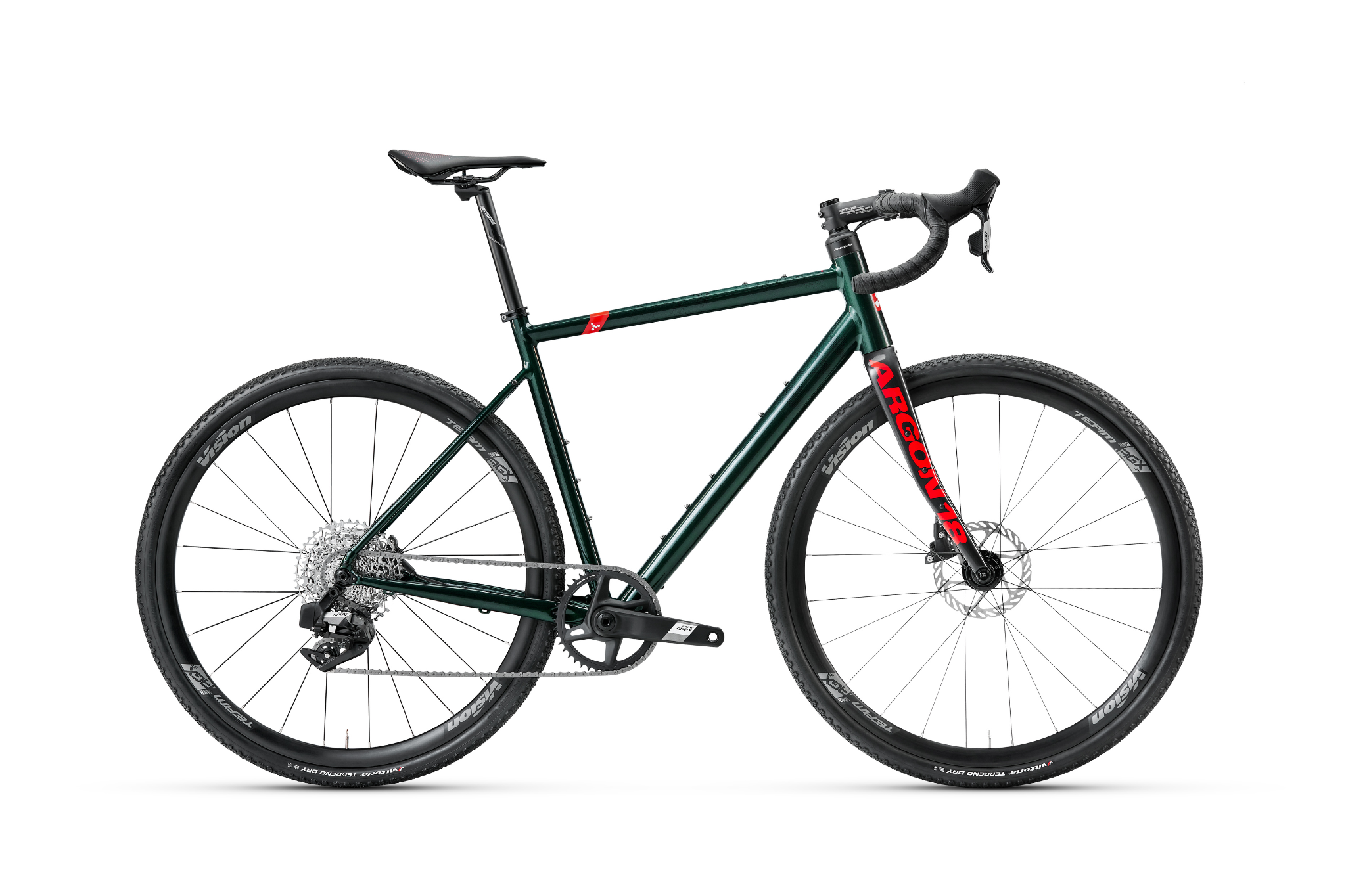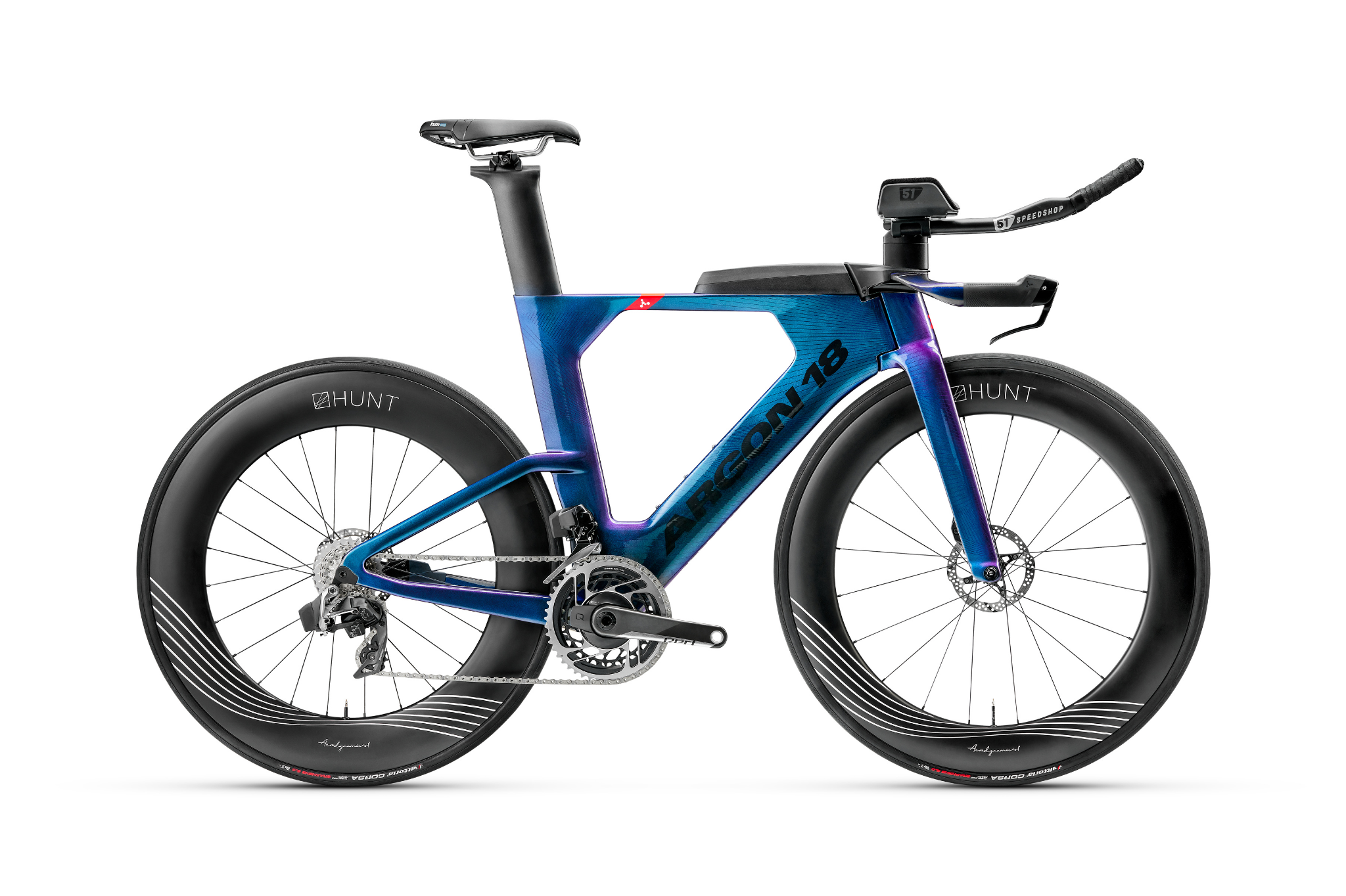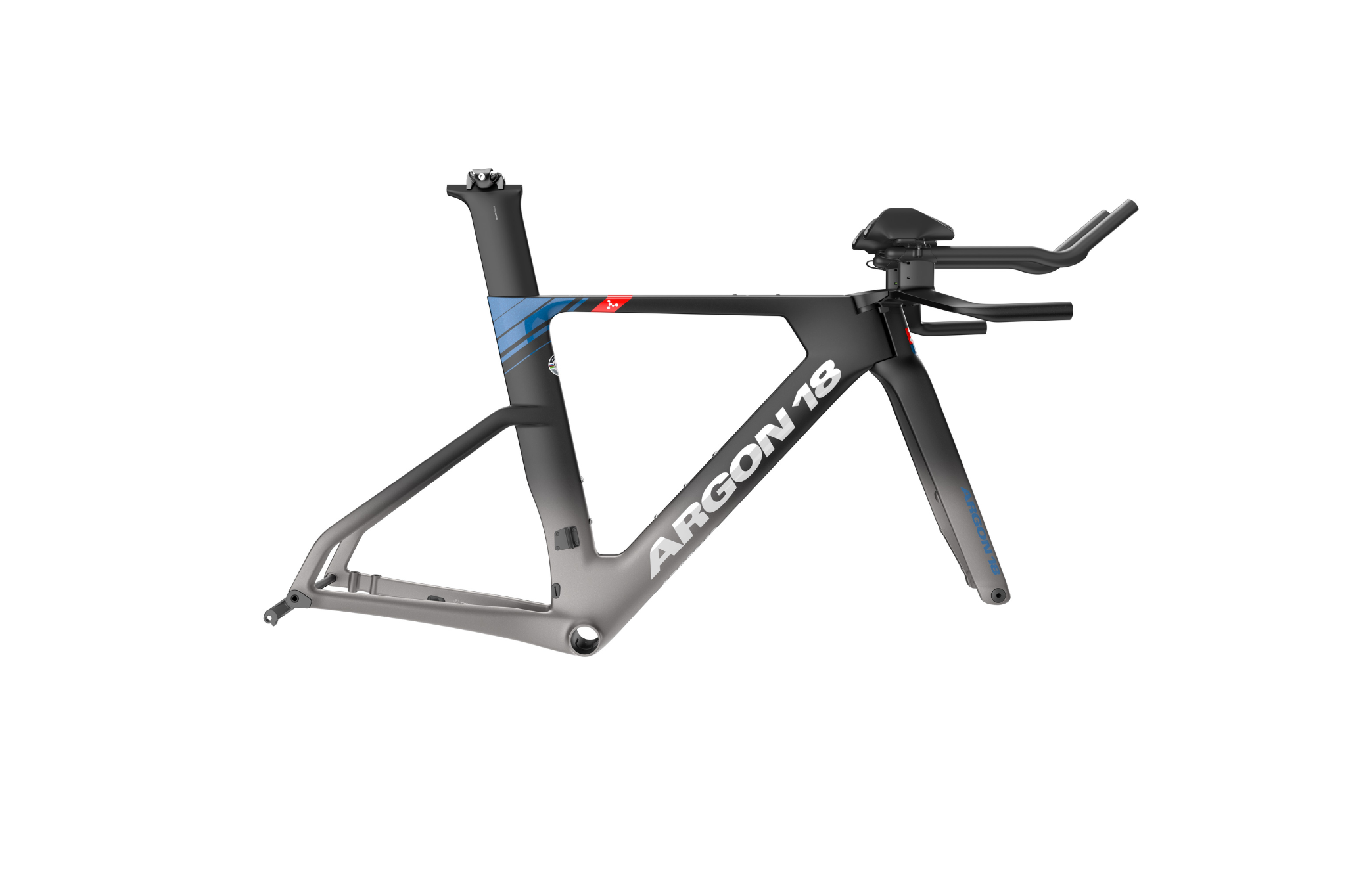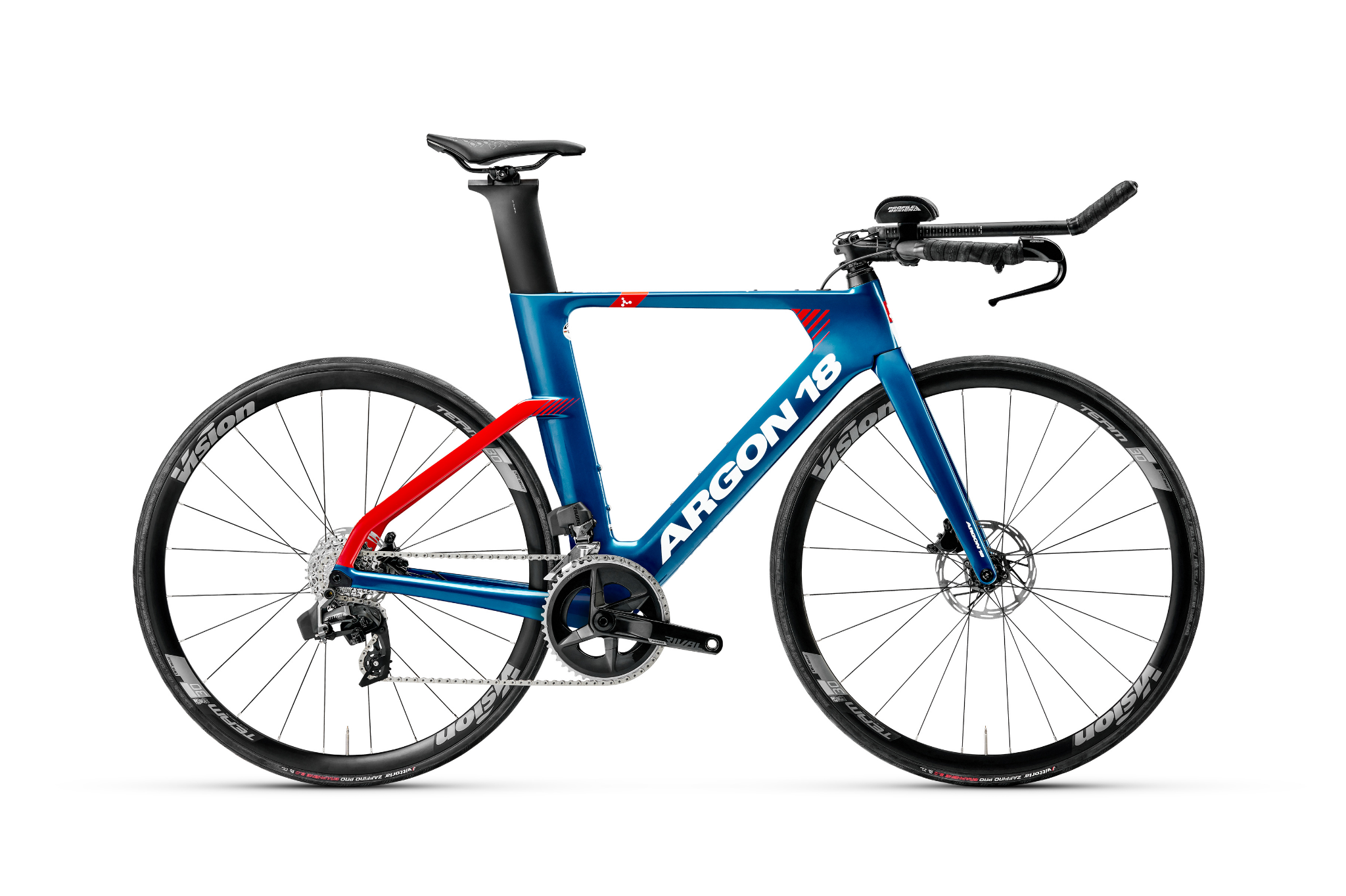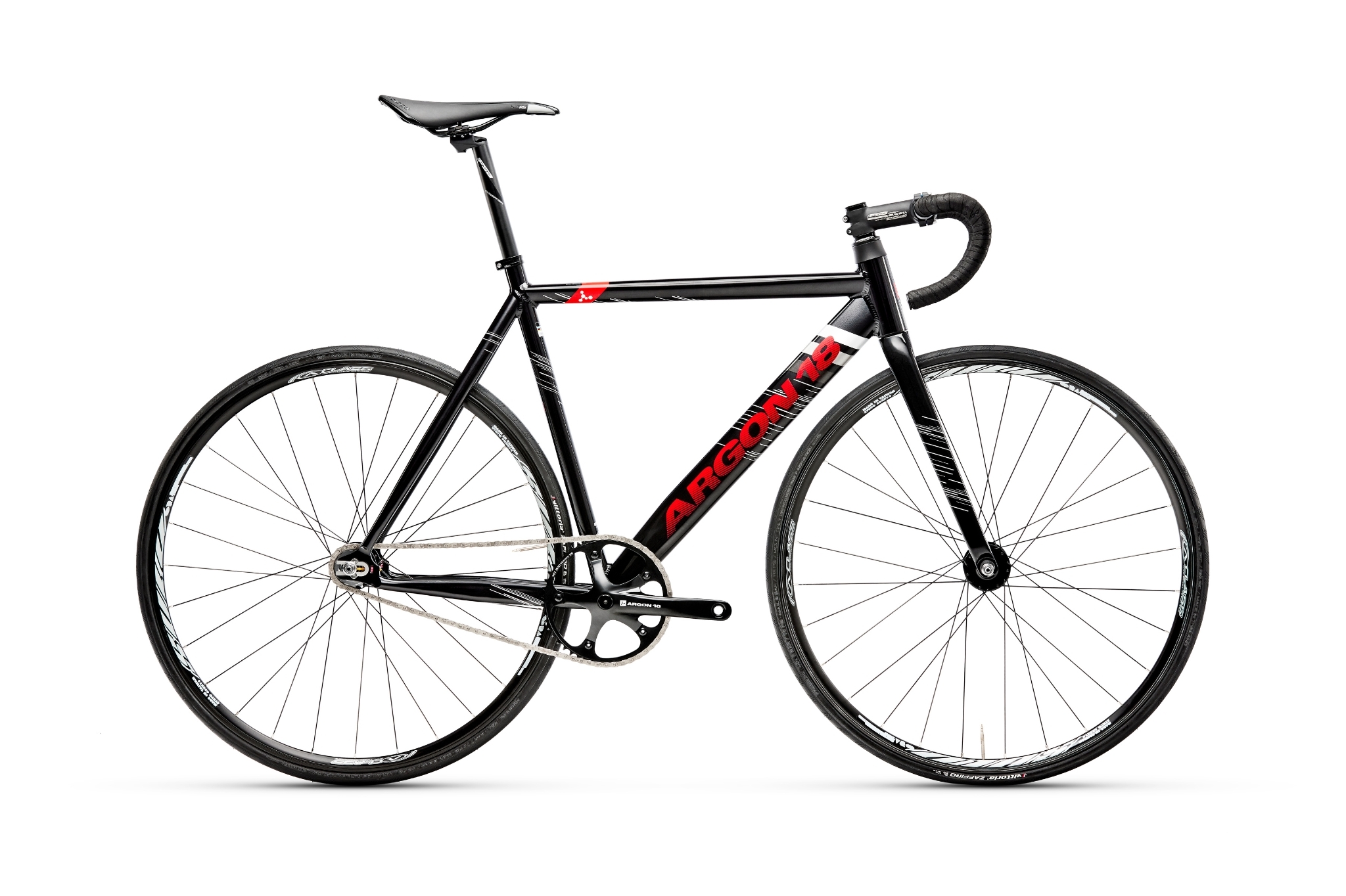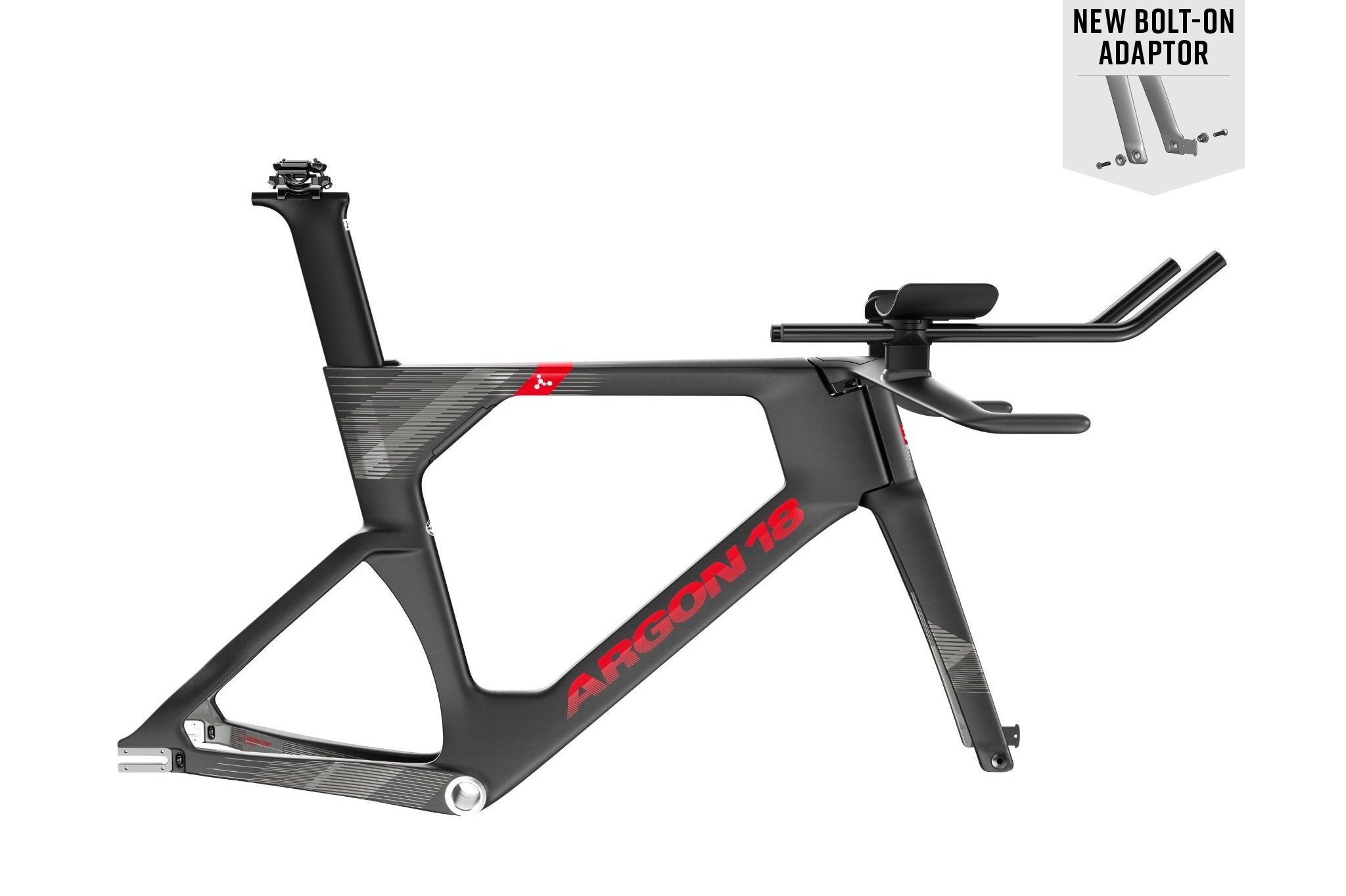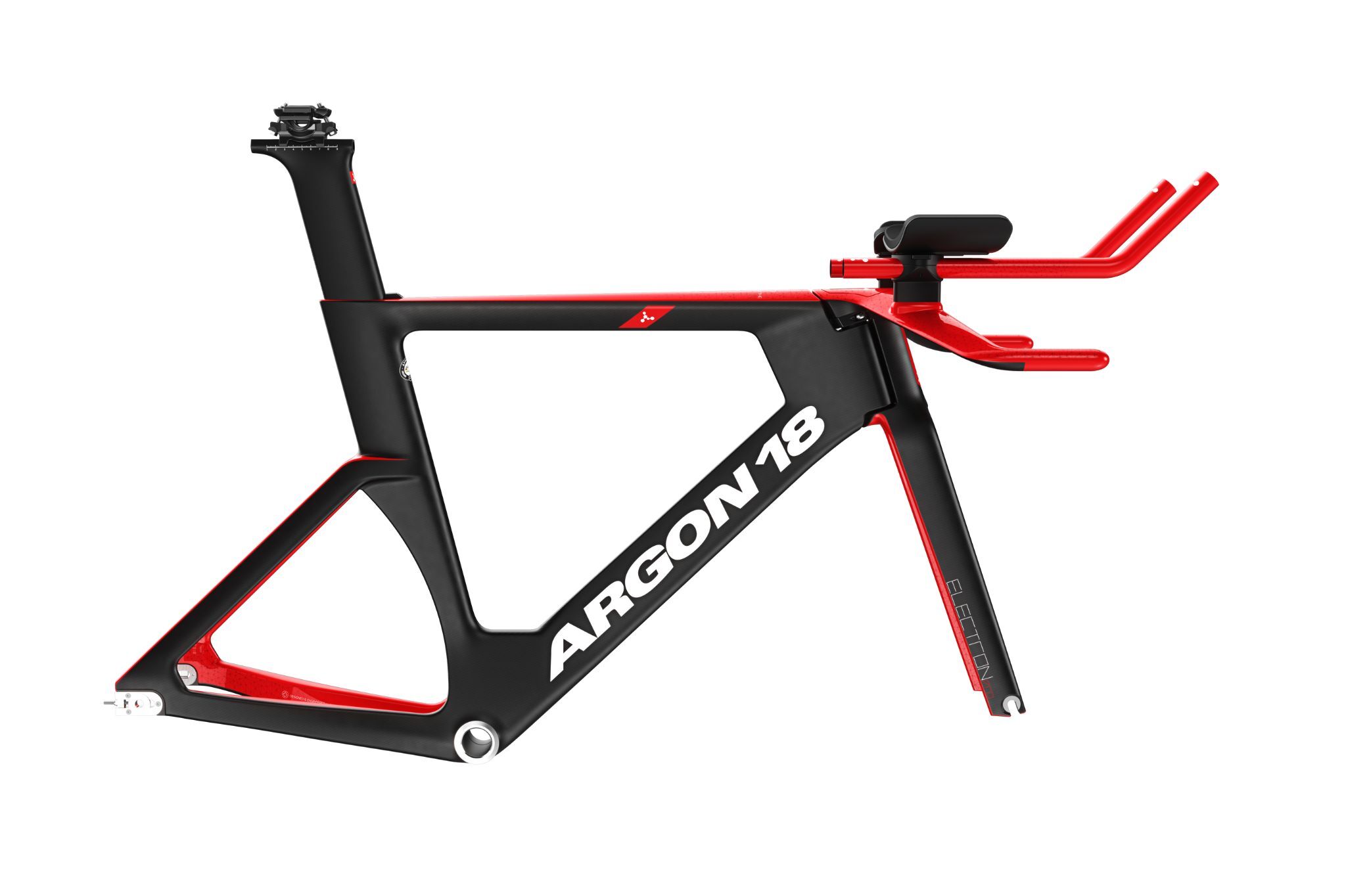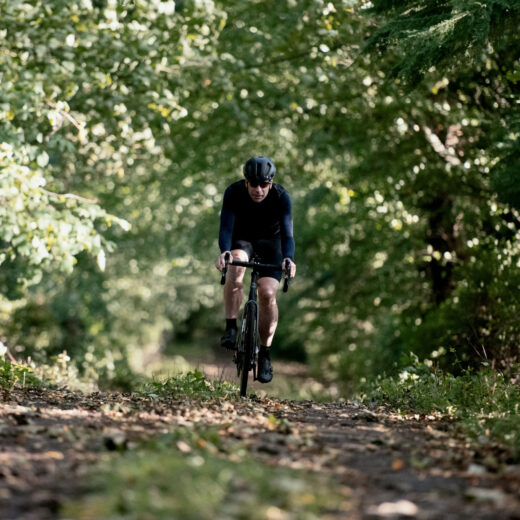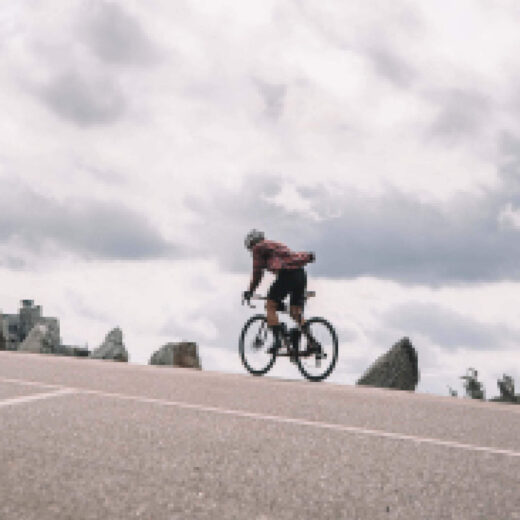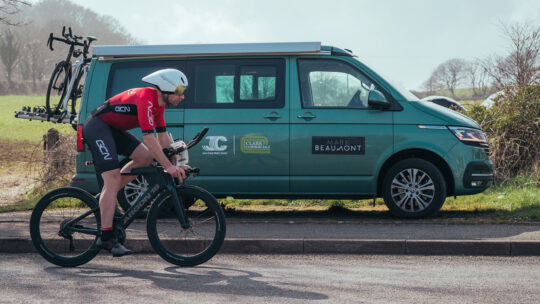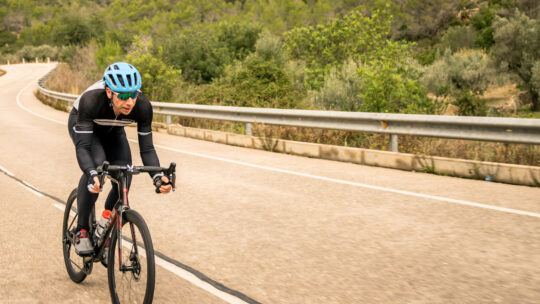Mark Beaumont’s Speed Machine: E-119 Tri+ Disc
Curious why an ultra-endurance athlete is training on a TT bike? We had a chance to talk with Mark Beaumont about his Argon 18 E-119 Tri+ Disc.
Argon 18: Let’s start with the obvious question. Why this bike? It was meant to be the main weapon for RAAM, which unfortunately didn’t work out this year, but was still a large part of your training this season.
Mark Beaumont: It’s really interesting to take a TT bike into the realm of ultra-endurance. Most people think of TT as shorter distance, or a race against the clock. The E-119 was designed around the idea of an Ironman distance, and we were preparing to take it into RAAM, a 3000-mile race. What I find fascinating is taking a bike that been poured over in terms of design, aerodynamics, accessories, and then fine-tuning that speed machine for a race that lasts a week. I can’t imagine that anyone else has done that with the E-119 before. When we did the 1000-mile training ride for RAAM, we averaged 21 miles/hour, and that was with a lot of climbing and winding through small towns along the way. You couldn’t do that on a road bike. It’s only by going into TT position that you get that level of efficiency.
To get that efficiency, we’ve done so much testing on the bikes, literally testing every possible part to see what difference it makes. The skinsuits, helmets, where we place our bottles, high socks, low socks – you name it, we tested it. We got really geeky about not only getting our CdA as low as possible but also how we get into a position where we could efficiently put out that kind of power. It was truly a fascinating journey to take the bike into this unknown space, and I think we have an amazing setup now.
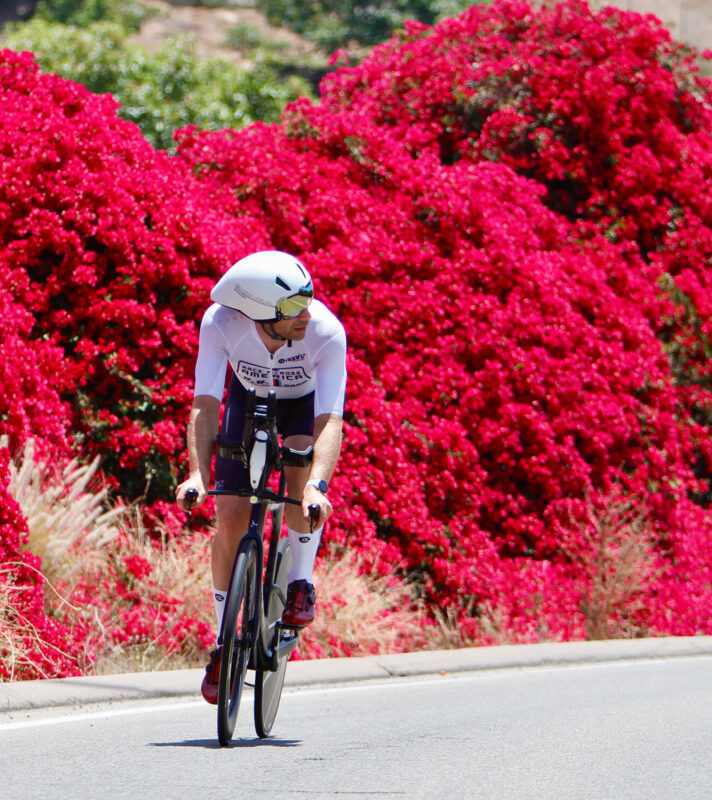 PHOTO: Lee Collier
PHOTO: Lee Collier

A18: Have you ridden many TT bikes before?
Mark: Not really. The biggest surprise was my ability to stay in that position. I’m tall, I’m a big rider for an endurance rider, and for someone so tall you’d think your lower back and neck would be in trouble, but that wasn’t the case. Getting used to that TT position, getting on the bike at first and going from road to TT position was almost the same as going from a gravel bike to a road bike – it’s a big shift. But it’s the connection with the bike, with the road, and with the ride that just puts a smile on your face. You feel like a fighter pilot on a bike like the E-119. I needed to get used to the position, with your head low and the field of vision so different. But at the heart of it, it’s just a ton of fun to ride. There’s something about the fluidly and speed and geometry – it’s a bike that makes you feel fast. And I think we’ve proved that it can be effectively ridden over distances that I would have only looked at with a road bike before. I would implore any roadies to try a TT bike if they haven’t - just give it a shot.
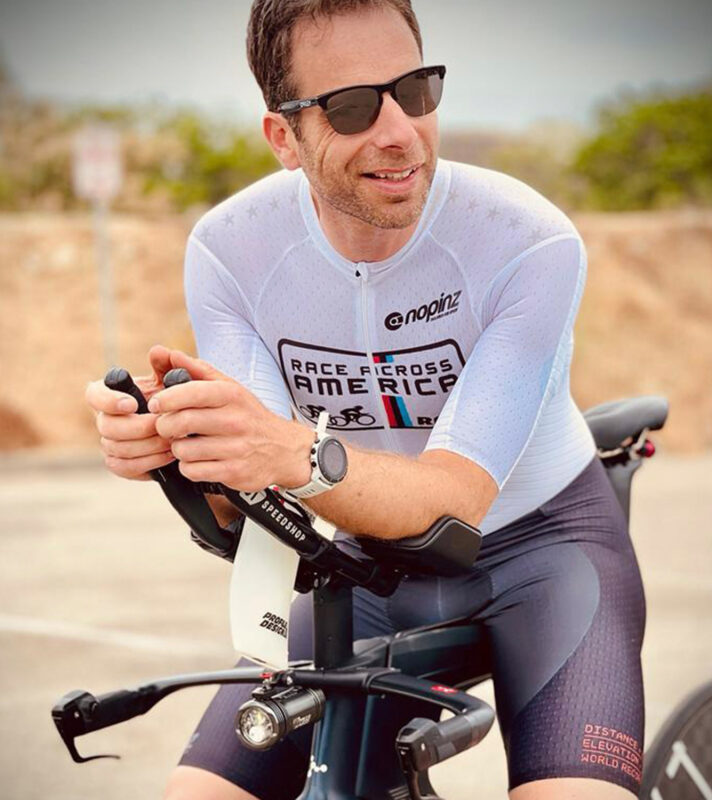 PHOTO: Lee Collier
PHOTO: Lee Collier
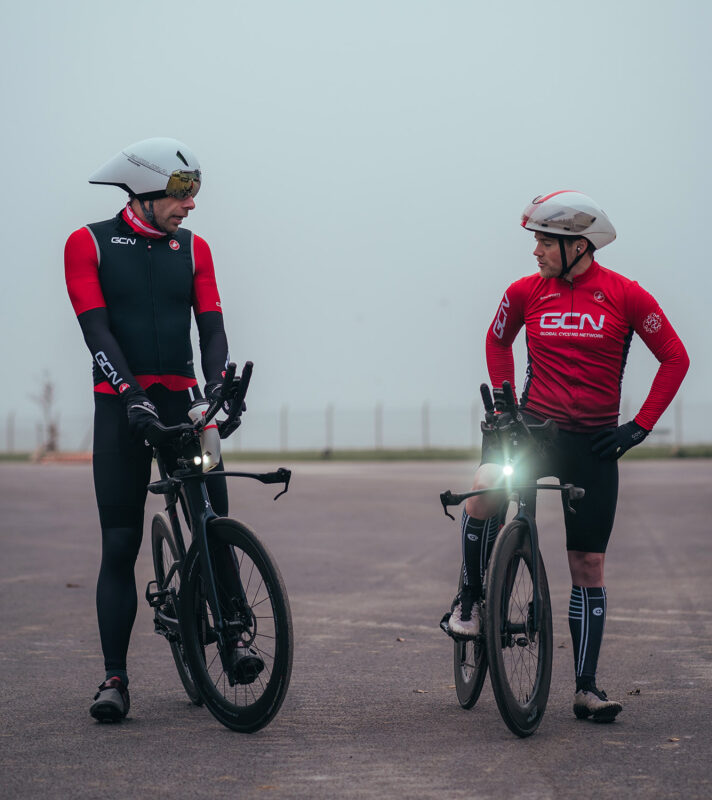
A18: What sets this bike apart?
Mark: You assume on a TT bike you are committed to the flat lands only, but I’ve gone on some super hilly terrain and I’ve never thought, wow, I’m on the wrong bike. You also have to think about how you effectively fuel and hydrate for longer rides. I know I need 80-120 grams of carbs an hour – so say you’re doing an unsupported ride or even something like a century, how do you carry that? That’s what this bike was designed for. You’ve got options around functionality with this bike, the storage, the toolkit, the hydration options, all those details have been thought about in the design of the bike.
A18: What about the fit process?
Mark: It’s a totally different fit from my road bike. I use a different saddle, I’ve got a different length between saddle and crank, a different reach. There’s really not a lot that’s comparable, that could be transferred from my road bike fit. It’s definitely not the case of getting the bike out of the box and away you go. You’re a lot more connected to the bike in a TT setup, and because of that, because of the sweet spot you need to find in terms of pedaling efficiency, it does pay to put time into being set up well. It’s such a high-performance bike, so when you find that sweet spot it’s got wonderful fluidity. It’s not a passive position. In fact it’s an incredibly active position. You have to set it up and think about how you’re operating the machine. When you’re riding it, you are very much in the moment – but also grinning ear to ear.
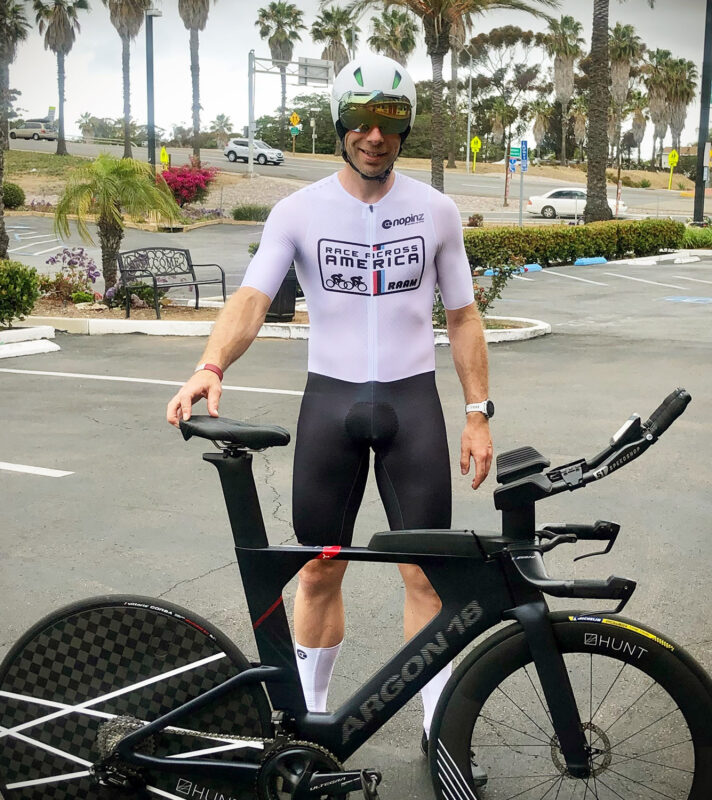 PHOTO: Mark Beaumont
PHOTO: Mark Beaumont
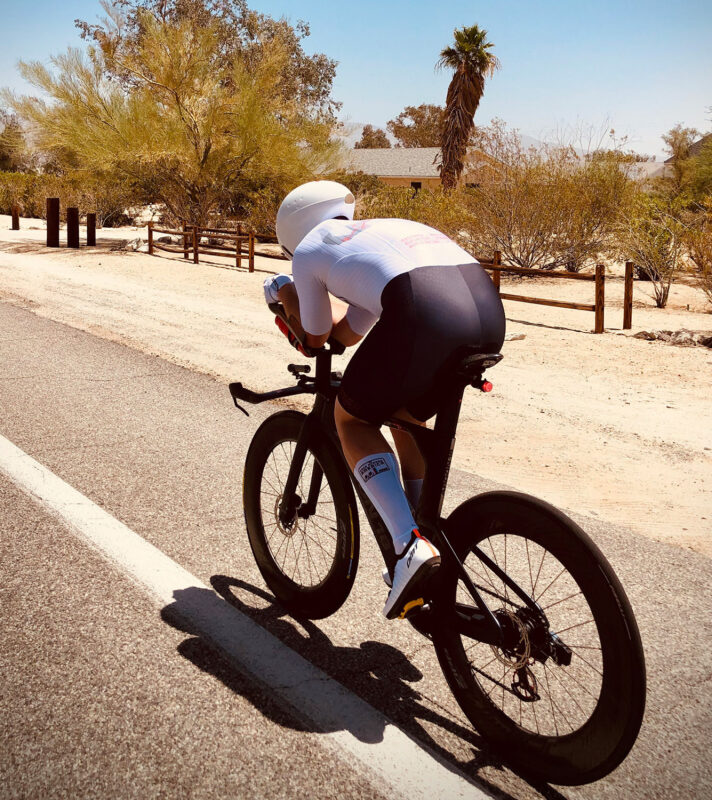 PHOTO: Mark Beaumont
PHOTO: Mark Beaumont
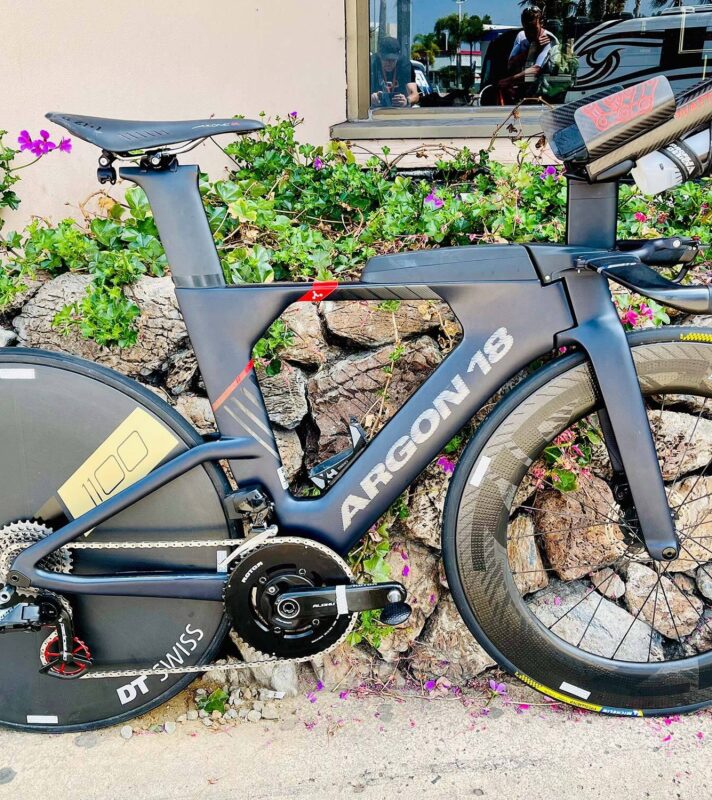 PHOTO: Lee Collier
PHOTO: Lee Collier
A18: What makes your training different on a bike like this?
Mark: In terms of training, I wish I’d known in my 20s what I know now in my late 30s! The way I train, the way I set up my bikes, my nutrition – I’m a stronger rider than I’ve ever been, I’m much more efficient. Most riders come to ultra-endurance later in their careers, but I started as a teenager. As you get older, you assume there will come a tipping point where you don’t get stronger. But I’m turning 40 and I’m faster and stronger than ever before. A bike like the E-119 is perfect to make that happen, as it’s fascinating how that strength translates into efficiency in the race. I recently looked back on some footage from the 80 Days ride, and I really do wish I knew then what I know now. That’s the exciting bit – there’s still so much to learn, so much to tweak and change each season to keep getting after your personal best. Because at the end of the day, you’re only racing yourself.

